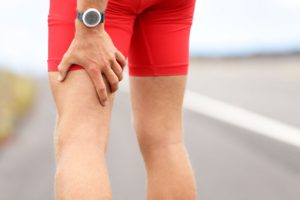Hamstring strains are very common in sports including football, soccer, hockey, sprinting, dancing and AFL. In AFL the it is the most common sports injury with a rate of 6 injuries per club per season. Similarly in the English premier League has a rate of 5 hamstring strains per club per season. On average each hamstring strain will equal four to five matches missed. Of all injuries, hamstrings have the highest rate of re-injury (34% AFL, 12% EPL)

Types of Hamstring strains
Type 1: Sprinting related hamstring strain.
Sprinting is the most common way to strain a hamstring. Studies have shown that hamstrings are most vulnerable to injury as your knee straightens forward during sprinting. At this time the hamstring is highly activated as they work to decelerate in preparation of foot-strike.
Type 2: Stretch related hamstring strain.
Stretch hamstring strains normally involve sports such as ballet, dancing and gymnastics. They involve large amplitude movements and the common mechanism of injury is an excessive stretch into hip flexion. In contrast to the sprinting related strain the stretching type injuries are located close to your sit bones (Ischial Tuberosity).
Management of hamstring injuries
Sports injury rehabilitation programs for a hamstring strain never has a ‘recipe’ as each case is different. Progression of what may seem like a minor injury can sometimes take an extended period to fully recover and vice versa.
Acute management phase (first 48hrs):
Acute injuries should be assessed prior to treatment is administered.
RICE (Rest, Ice, Compression, Elevation) can be used for the first few days. E.g. Applying ice for 10-15mins every 3-4 hours until symptoms settle.
MUSCLE ACTIVATION is recommended early to promote formation of new blood vessels and expand on existing vascularity. In doing so this can increase healing to the injured region. Muscle activation includes hamstring contraction (e.g. hamstring curls with no weight).
MEDICAL THERAPIES have limited scientific evidence to support management of hamstring muscle injuries.
Sub-acute & Conditioning Phase:
Longitudinal massage along the muscle may assist in scar re-organisation in this phase. However strengthening is an important component to allow a suitable return to activity. Muscle strengthening should be specific for deficits and the injured limb should regain strength similar to the opposite limb prior to a return to activity.
Return to Sport:
Return to sport when you are strong, confident and have passed a series of criteria including:
- Completion of progressive running progrram
- Full range of movement
- Pain free static strength testing
- Full Strength
- Functional tests
- Sprinting from a standing start
- Abrupt changes of pace during run
- Side stepping
- Bending to catch ball at full speed (if appropriate for the sport)
- Successful completion of a full week maximal training
- It is important to persist with the program after return to sport to lessen the likelihood of recurrence.
Thanks for reading!
Pat Mcfadyen
For more on injuries:
